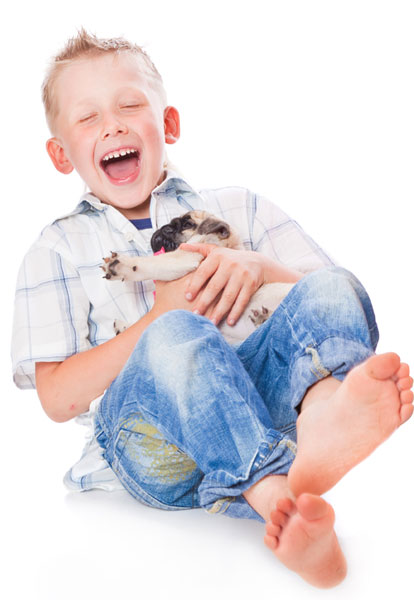If you see this icon in a fact sheet summary you may be dealing with a life threatening issue. Consult a veterinarian immediately.
Use our webform to ask a question or book an appointment

PARVOVIRUS (CPV)
Canine parvovirus (CPV) infection is a highly infectious disease that was first identified only in 1978. Despite that, it is relatively well known amongst dog owners because of the severity of the disease and its rapid spread through the canine population. The virus that causes it is very similar to feline enteritis and the two diseases are almost identical.
The main source of the virus that causes CPV is the faeces of infected dogs, which can carry a high concentration of viral particles. Susceptible animals become infected by ingesting the virus, which is carried to the intestine where it invades the intestinal wall and causes inflammation.
Unlike most other viruses, CPV is stable in the environment and resistant to the effects of heat, detergents and alcohol. CPV has been recovered from dog faeces even after three months at room temperature. This stability helps the virus to be easily transmitted via the hair or feet of infected dogs, contaminated shoes, clothes, and other objects. Direct contact between dogs is not required to spread the virus. Dogs infected with the virus and showing clinical signs will usually become ill within 7-10 days of the initial infection.
Affected dogs must be isolated to prevent the disease spreading. This is usually best done in the hospital’s Isolation Ward.
SEVERITY: Highly infectious and potentially fatal without prompt treatment.
The clinical signs of CPV disease can be variable but generally take the form of severe vomiting and diarrhoea. The diarrhoea may or may not contain blood. Additionally, affected dogs will often exhibit a lack of appetite, depression, and fever. Many dogs may not show every clinical sign but vomiting and diarrhoea are the most common, with vomiting usually the first indicator.
Parvo can affect dogs of all ages but is most common in dogs less than a year old. Young puppies less than five months of age are often the most severely affected, and the most difficult to treat.
The clinical signs of CPV infection are very similar to other diseases causing vomiting and diarrhoea, making the diagnosis of CPV a challenge for the veterinary surgeon. A positive confirmation of CPV infection requires the demonstration of the virus in the faeces, or the detection of anti-CPV antibodies in the blood serum. Occasionally a dog will have parvovirus but test negative for virus in the faeces. Fortunately, this is rare.
A tentative diagnosis is often based on the presence of a reduced white blood cell count (leukopaenia). If further confirmation is needed, faeces or blood can be further tested at the hospital. The absence of leukopaenia does not always mean that the dog cannot have CPV infection. Some dogs that become clinically ill may not necessarily be leukopaenic.
As with any viral disease there is no treatment to kill the virus once it infects the dog. However, the parvo virus does not directly cause death. It causes loss of the lining of the intestinal tract which results in severe dehydration, electrolyte (sodium and potassium) imbalances, and infection in the bloodstream (septicaemia). When the bacteria that normally live in the intestinal tract are able to get into the blood stream it becomes more likely that the animal will die.
The first step in treatment is to correct dehydration and electrolyte imbalances by the administration of intravenous fluids containing electrolytes. Antibiotics and anti-inflammatory drugs are given to prevent or control septicemia. Antispasmodic drugs are used to inhibit the diarrhoea and vomiting that perpetuate the problems.
Most dogs with CPV infection recover if aggressive treatment is used and if therapy is begun before severe septicaemia and dehydration occur. For reasons not fully understood, some breeds, notably the Rottweiler, have a much higher fatality rate than other breeds.
Parvovirus is almost fully preventable with routine vaccinations. Puppies receive a parvo vaccination as part of the vaccines given from 6 and about 10 weeks of age. After the initial series of vaccinations all dogs should receive an annual booster shot. Dogs in high exposure situations — kennels, dog shows, field trials, etc. — are particularly at risk of CPV. Bitches should be boosted before mating or immediately before whelping in order to transfer protective antibodies to the puppies.
If you have had an unvaccinated dog unfortunate enough to be infected with CPV, the stability of the virus in the environment makes it critical to thoroughly disinfect contaminated areas by cleaning food bowls, water bowls, and other contaminated items with a solution of 250 mL of chlorine bleach in 5 litres of water. The hospital can assist you with advice on the correct disinfection regime.
MORE DISEASES OF DOGS
DOGS: ADVICE FOR EMERGENCIES


